1900-July 1902 John Jack Watts
John Jack Watts was born at Stockbridge on 9 May 1861 and had his first ride aged 15, celebrating his debut winner on Aristocrat at Salisbury in May 1876. He stood at 5ft 10ins and his natural winter weight was 10 to 11 stone which he reduced to 8st 7lb during his riding months. He rode 1,412 winners under Jockey Club rules in 24 years, including 19 classic winners. By 1895 he was having difficulty riding at 9st and was, by then, living at Kisber Villa in Exeter Road, once the home of the Baltazzi brothers. In 1890 he bought 24 acres of paddock from Lord Falmouth's executors for £10,700. While still at Kisber Villa, in 1892 he built a large two-storied house with a parapet on a four-acre site, but though he lived there for a while he sold Hamilton House in November 1898 to Sir James Miller. Miller's executors put the house on the market in 1906 and it was demolished in June 1965. John Watts then moved to Cynthia House, another prestige property, in the High Street and received his licence to train on Newmarket Heath in June 1900. Still living at Cynthia House, he built himself Lansdowne House with stabling for 20 and a head lad's house. In his short training career he trained the winners of the 1901 Coventry Stakes and the Gimcrack. Jack Watts was taken ill at Sandown Park, was too ill to be moved and died there on 29 July 1902.
May 1915-October 1915 John W Burton, J E Watts
John Walker Burton ran racehorses in his own name from 1913 to 1917 whilst also riding in amateur races. He initially placed his horses with Teddy Martin up to May 1915, but when Martin relinquished his licence Burton had to move his horses. In May 1915 Burton took a lone-year lease on J E Watts's stables at Lansdowne House and began to train for himself. He only held a licence for that year and in October sold six of his horses retaining one, though he had a couple on the gallops soon afterwards. Subsequently he owned on a very small scale with Bert Lines at Clandon for a year or two. Mr Burton tended to buy most of his horses out of sellers. He had rather vivid colours, crimson and gold halved, sleeves reversed and turquoise cap. He himself trained no winners but Martin managed him one or two. After holding his licence for a few months in 1915 Burton joined the Army and was commissioned in the Motor Machine Gun Service in May 1916, later joining the Tank Corps.
John Day was born on 16 October 1884 at Snodland, a small town in North Kent, the son of a commercial traveller, and became apprenticed to Sam Darling at Beckhampton. He held a Flat jockey's licence up to 1913 but most of his considerable riding success was on the Continent. He began to train at Stockbridge in 1914 before moving to the late Mr Pirie's stables at Letcombe Regis in January 1916. While keeping his Berkshire establishment he took additional stabling at Woodlands Stable, Newmarket, in February 1917, sharing the stables with de Mestre. At some time in 1918 he also rented Lansdowne House stables from Mrs Watts. In September 1917 he asked for his exemption from the forces to be extended, having twice been rejected for service and was on a special diet. He received a conditional exemption. In early 1918 he considered a move to Beckhampton but this came to nothing and Day kept his Newmarket satellite in 1918, but after the War he moved his entire establishment to Epsom, even returning to the saddle for the 1919 season to ride for McGuffie, and Day's horses went to Francis Cobb.
For over 4 centuries racing has been staged in Newmarket, but how have the racecourses evolved from an initial starting point at Fleam Dyke Pumping Station, some 8 miles from the town, with a winning post barely 200 metres from the town centre, into two world recognized, excellent racecourses and a universal acceptance that Newmarket is the Headquarters of racing?
To access an interactive racecourse map showing over 50 individually named racecourses CLICK HERE. The map will enable you to:-
1. Determine when extended races over 8 miles, 6 miles and 4 miles began to be replaced by the courses now visited by thousands annually;
2. Consider how the challenge of crossing the Devil's Dyke was overcome;
3. Contemplate why the town no longer has a steeplechase course despite having at least 5 courses during the past 2 centuries;
4. Examine the practicalities of having up to 48 starting posts and winning posts;
5. Appreciate that it was not financially viable to have an open racecourse spread widely across the heath, with a finishing post barely 200 metres from the town centre;
6. Research how and why the Cambridgeshire Handicap has been contested over 3 different courses.
NOTE: The map does not make mention of 2 particular courses:-
(i) Sefton Course (also known as the Cambridge Road Course)
Source: 1970 Raceform.Used from 1959 to 1975.
(ii) New Circular Course
The Circular Handicap was run on Friday 29th October 1875 on the New Circular Course of about two miles.
Source: London Standard (30th October 1875): ''the horses started near the Turn of the Lands, ran back way of the Cambridgeshire Course towards the Ditch, and afterwards proceeded down the side of the Tan Gallop, and turned into the Rowley Mile near the Bretby Stakes starting post, finishing at the stand at the end of the flat. Except in the hollow near the Cambridgeshire start the runners should have been visible all the way if the sky had been bright and clear''.
Another report hoped that the Circular Handicap would become a feature in future programmes, as it would be contested in front of the new grandstand which would be completed in about a year and would be able to accommodate thousands.
(I am grateful to Tim Cox for bringing attention to these 2 courses.)
Enjoy researching the intriguing history of Newmarket and its many racecourses.
John Evelyn Watts, universally known as Jack, was born on 5th October 1887, son of the legendary trainer John Watts. He served his jockeys apprenticeship with his father, going on to partner a number of prominent winners, including the 1903 Cambridgeshire winner Ballantrae. He also rode Kunstlet to victory in the 1903 Royal Hunt Cup, later winning the 1907 Stewards Cup aboard Romney. After his successful career as a jockey ended, he launched his training career, owning Lansdowne House, but then the War intervened. Just after the First World War had ended, in 1921 Jack Watts trained at Lansdowne House and its 30-odd stables at the rear of the house. His most famous victory was in 1927 when Call Boy (SR 2049) won the Epsom Derby for owner Frank Curzon at 4/1 fav, beating Hot Night and Shian Mor by 2 lengths and 8 lengths, but by then he had transferred tp Primrose Cottage. Between December 1927 and 1934 he returned to Lansdowne House, but then lost most of his horses and became assistant to Captain Whitaker. At the end of 1935 he was appointed as private trainer to M Boussac at Chantilly, training Corrida to win2 Prix De L'Arc De Triomphes. In 1942 he trained for H J Joel at Foxhill, but moved to Sefton Lodge with 11 horses in October 1945. He gained a second Classic victory during the War when the Classics were run at Newmarket. He trained Picture Play to victory at 15/2 when ridden by Charlie Elliott in the 1944 1000 Guineas for owner Jim Joel. He retired in 1952 and died in Newmarket on 23rd October 1959 aged 72. His son, Jack Watts jnr, was born at Lansdowne House and trained at a variety of Newmarket Stables between 1950 and the 1970s.
1927 Epsom Derby CALL BOY (SR 2049) 4/1 fav owned by Frank Curzon, trained by Jack Watts and ridden by Charlie Elliott.
1944 1000 Guineas PICTURE PLAY (SR 1924) 15/2 owned by Jim Joel, trained by John (Jack) Watts and ridden by Charlie Elliott
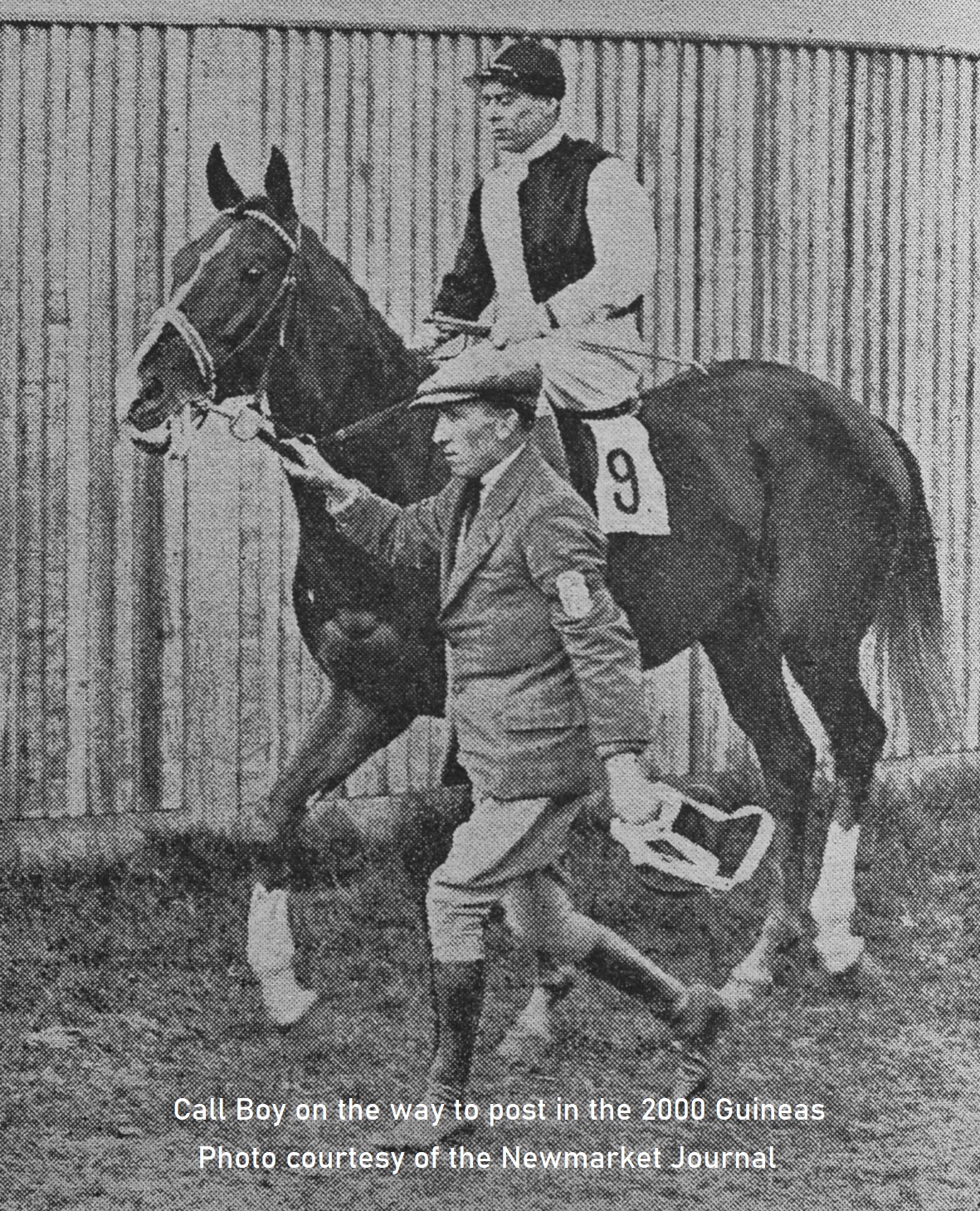
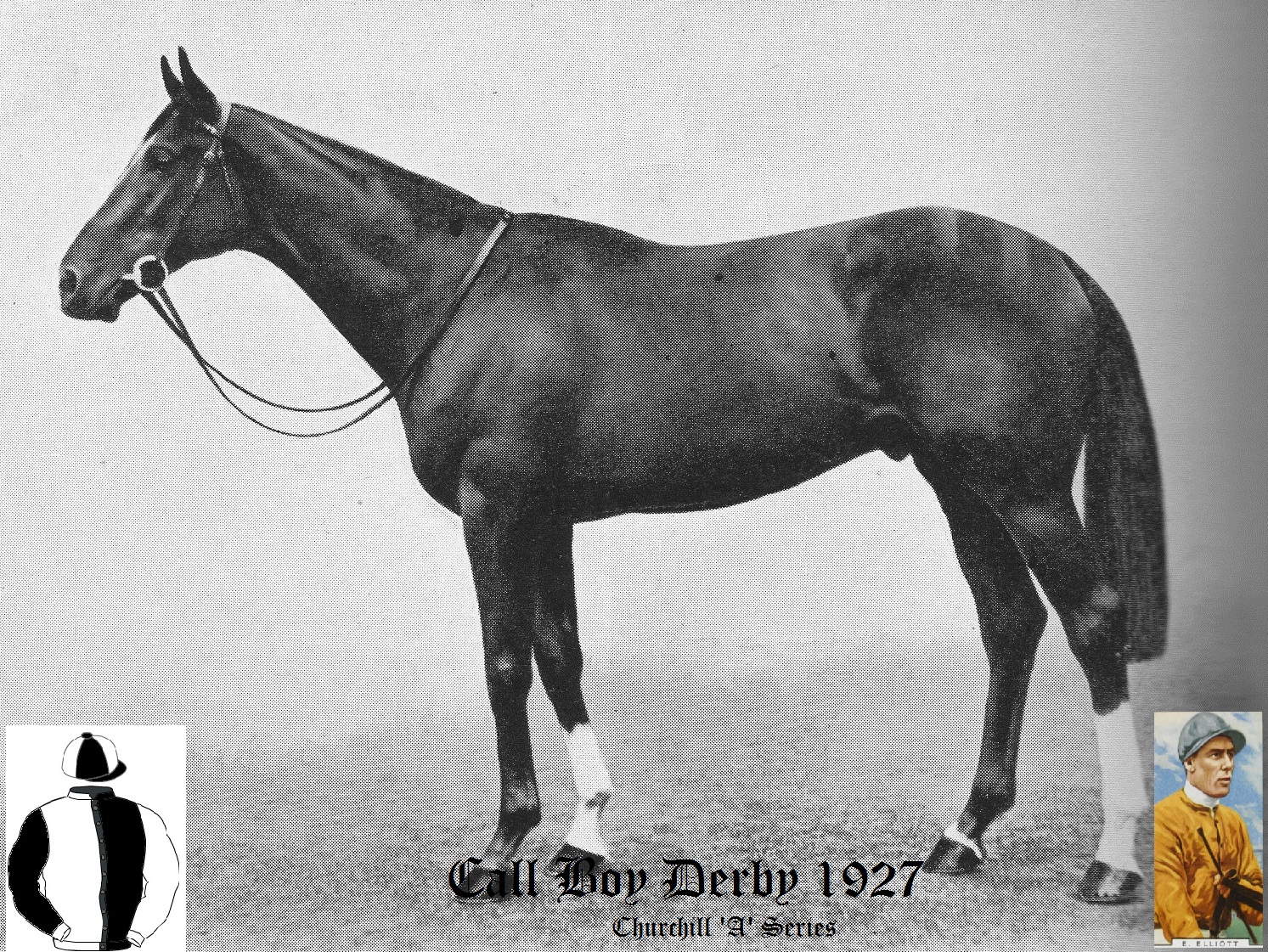
CALL BOY (SR 2049)
Call Boy, a chestnut colt by Hurry On out of Comedienne, was born in 1924 at Frank Curzon's Primrose Cottage Stud in Newmarket. In a career spanning 7 races he was successful 4 times, winning the Linton Stakes and Middle Park Stakes at Headquarters, having previously been beaten in the July Stakes, and running second in the Champagne Stakes at Doncaster. He was made favourite for the 1927 2000 Guineas, but was beaten a short head by Adam's Apple (SR 1983) at 20/1 owned by Charles Whitburn. He then won the Newmarket Stakes by an impressive 4 lengths and, on the back of this win, was made 4/1 favourite at Epsom, where he duly obliged by 2 lengths from Hot Night. Owner Frank Curzon was advised not to attend by his doctor, but was determined to do so. When the horse won, King George V, seeing how ill Curzon was, invited him to receive his trophy at Buckingham Palace. Curzon, determined to carry on as if nothing was wrong, declined, instead climbing the Epsom stairs to receive his trophy. Frank Curzon died a few days later, while Call Boy went off to stud without racing again.


Bob Adams, born on 3rd July 1875 at Turf Cottage, Belmont, Sutton in Surrey was the son of a leading National Hunt jockey James Adams. Bob served an apprenticeship with Joe Cannon, at the time based at Clifton House, riding for a very brief period under Rules. He spent most of his career on the continent; was champion jockey of Austria-Hungary on 6 occasions, rode predominantly for John Reeves, but in 1899 rode for Frank Butters, partnering Frank's first winner as a trainer. He also rode 3 Derby winners, an Oaks winner and 9 St Legers. Once he hung up his riding boots he became an equally successful trainer, training no less than 6 Derby winners, 11 Oaks winners and 3 St Leger winners on the continent before moving to Lawrence Stables, Royston in 1931 as assistant to Roy Pope, taking charge on Pope's retirement in 1934. Adams took charge at Lawrence Stables, also training National Hunt winners, but in September 1935, having successfully applied for a Newmarket trainer's licence, he moved to Lansdowne House where he trained just 5 horses, remaining there until 1936. He applied for a Newmarket Flat trainer's licence in July 1936, taking on the tenancy of Clarehaven at the end of that season with a string of 40 horses, the majority owned by Sir Alfred Butt.
1947-1951 Henry B Leach
Henry Beresford 'Chubb' Leach was born at Graham Place on 5 June 1907 and had his first ride in public aged 12, riding his first winner on 9 June 1921. His most high-profile win was in the 1924 Chester Cup aboard Rugeley, but by 1930 he had to relinquish his riding licence. When his brother Felix died unexpectedly in 1930 he trained at Queensbury Lodge from December 1930. He continued to train there as his main stable, but in 1947 he bought Lansdowne House stables, close by, to use as a second yard until Jeremy Tree took over in 1952.
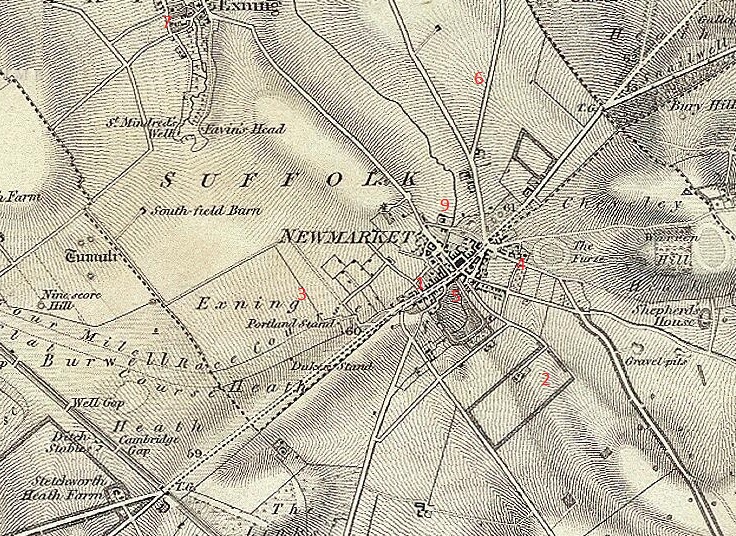
1952-54 Jeremy Tree
Arthur Jeremy Tree was born on 21st December 1925, son of Ronald Tree, the Conservative MP for Market Harborough, and Nancy Tree (nee Lancaster) who was niece of the first lady MP Nancy Astor, who took her seat on 1st December 1919. It was Nancy Astor who sparked Jeremy's interest in horse racing, and he began work as assistant to Richard Warden in 1947. He took out his own trainer's licence in 1952, training at Lansdowne House Stables in Newmarket, but moved to Beckhampton, Wiltshire in 1953. It was whilst he was based at Beckhampton that he achieved his greatest training successes, winning 4 English Classics; 1963 2000 Guineas with ONLY FOR LIFE (SR 1876) at 33/1, 1975 Epsom Oaks with JULIETTE MARNY (SR 1909) at 12/1, 1979 Epsom Oaks with SCINTILLATE (SR 1797) at 20/1, and 1980 2000 Guineas with KNOWN FACT (SR 2092) at 14/1. Arguably his greatest training feat was landing the 1985 Prix de L'Arc de Triomphe with Rainbow Quest.
1954-1956 Miss Rachel Parsons
Rachel Mary Parsons was born in 1885, daughter of Hon. Sir Charles Algernon Parsons, who was the Anglo-Irish engineer who invented the compound steam Turbine and founded C A Parsons and Company. He married Katharine Bethell in 1883 and they had two children, Algernon George Parsons, who was killed in action in 1918 in the First World War, and Rachel Mary Parsons. Sir Charles died on 11th February 1931 on board the steamship Duchess of Richmond, while his wife died just 2 years later. This meant that Rachel became a very wealthy spinster who gave lavish dinner parties at her London residence in Grosvenor Square, but in 1947 bought a Newmarket property at Branches Park. She was a keen racing enthusiast, owning a string of thoroughbreds and employing and discarding a number of trainers. One of her trainers was Charles Bell who only trained for her for 9 months, but found her difficult to get on with. She purchased Lansdowne House from Jeremy Tree in 1954, employing Denis James Pratt as one of her stable lads. She became more cantankerous and more reclusive. Denis was in his twenties, with a wife and child, but found her increasingly difficult to work for, and left Lansdowne House Stables in May 1956, although he was owed about 2 months holiday pay. He made many requests to be paid what he was owed over the following 6 weeks, but Rachel was stubborn. Finally, in early July he decided to confront her, making his way to Lansdowne House to demand payment, but she became angry, shouting obscenities and insults at him, and attacking him with her handbag. He defended himself with an iron bar which was readily to hand, hitting her once, but unfortunately the single blow killed her. He stood trial for murder at Essex Assizes in Chelmsford, but was found not guilty for murder, although he was found guilty of the lesser charge of manslaughter and given 10 years imprisonment.
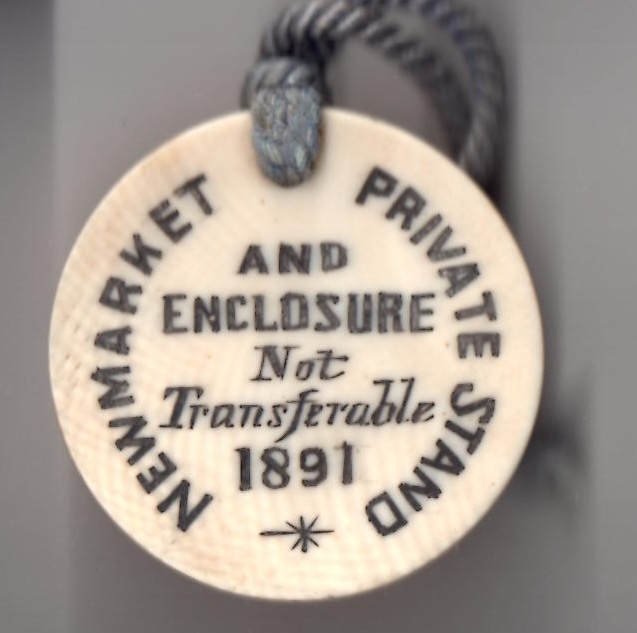
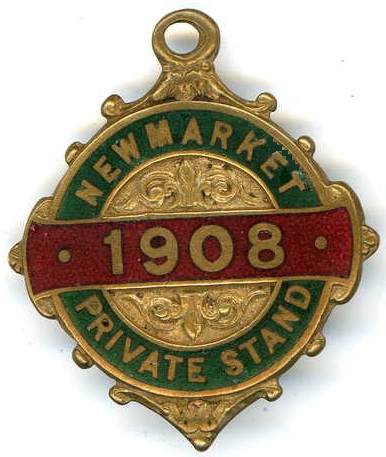
1957-November 1963 Basil Foster
Basil Foster was born in Doncaster and began training in 1951 at Rectory Farm, The Ridgeway in Enfield. In 1955 he trained a steeplechaser, Joe Holland, to victory, and he was so enamoured with the horse that when he moved to Lansdowne House Stables in 1957, he renamed the house Holland House, a name which has been maintained ever since. In December 1961 Basil gave two apprentices their chance, one was Jeremy Glover who went on to become a very good racehorse trainer, whilst the other was David Jones, a Manchester lad who left school early to join the stable. He enjoyed a few months learning his trade and riding out on the Warren Hill gallops, but left racing to make his name as one of The Monkees, Davy Jones. Basil continued to train, relocating from Newmarket at the end of the 1963 season to Lambourn and Middleham before a spell in both Canada and Florida.
November 1963-1990s Miss Elizabeth Crawley
Miss Elizabeth Crawley, sister of Samuel and Cecil Crawley, was an eccentric who loved race horses. She purchased Holland House, using the 30-odd stables linked to Holland House as a bed and breakfast establishment for horses, for temporary equine visitors to Newmarket in readiness for a stud engagement, or as a box for one of the lots at nearby Tattersalls' sales. The House was also later used as a care home.
2010-present Bill Gredley
On 5th July 2010 Holland House Stables were sold at auction for £460,000 to a property agent, Jim Bryant, acting on behalf of Bill Gredley. The stables had not been used for training purposes for 47 years, when they were the training establishment of Basil Foster.



